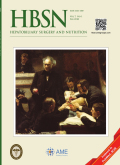10.3978/j.issn.2304-3881.2012.10.15
Risk stratification for Hepatitis B treatment in the molecular age
Hepatitis B virus (HBV) is a world-wide scourge, affecting over 2 billion individuals, of which an estimated 240 million are chronic carriers of the virus (1). The burden of this disease is in the developing world, particularly in Asia and Africa, where diagnosis and monitoring can be difficult. Once infected, the outcome of the disease is quite variable between individuals, ranging from spontaneous clearance, chronic asymptomatic infection, chronic active infection, to fulminant liver failure (2). Chronically infected individuals are at risk for developing cirrhosis, liver failure and hepatocellular carcinoma (HCC) (15-40% of HBV infected individuals). Importantly, unlike HCC in hepatitis C infected individuals, HCC in HBV infection can occur in non-cirrhotic individuals. Although numerous associations between environmental factors (smoking, alcohol use, male gender), viral factors (viral load, active replication, core and precore mutations) and the development of HCC in chronic HBV infection have been identified, a clear understanding of the role of host genetics remains elusive. Importantly, treatment with direct-acting antiviral medications likely can abrogate much of this risk and prevent these dreaded complications of HBV (3,4). Despite published guidelines regarding the who and when to initiate treatment in HBV infection (5), clinicians anxiously await a better understanding of which individuals with chronic asymptomatic infection will benefit most from these medications.
2
SRM supported in part by NIH grant AI093163. Disclosure: The authors declare no conflict of interest
2019-07-18(万方平台首次上网日期,不代表论文的发表时间)
共3页
129-131






